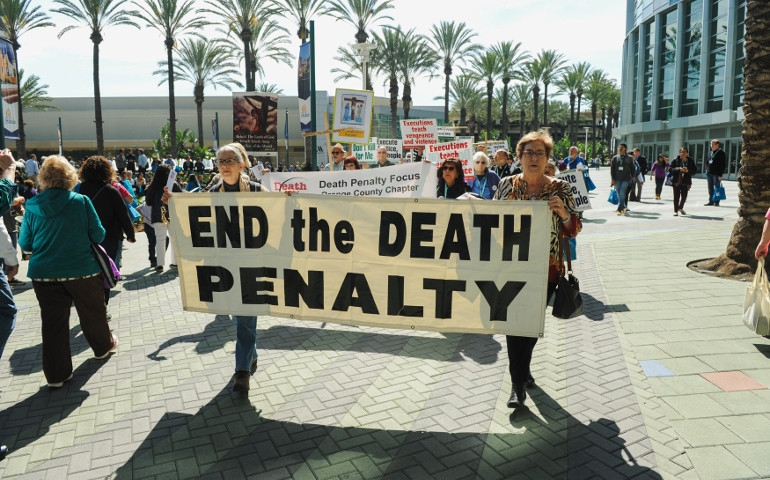
JOSEPH NG – NOVEMBER 8TH, 2018
In June of 2018, California banned soda taxes: Governor Jerry Brown signed Assembly Bill 1838, which prohibits local governments from imposing new taxes on soda until 2031.
The bill was supported by the beverage industry, which otherwise threatened to back a statewide ballot measure requiring local governments to secure a supermajority vote for any tax increases—a move that would cripple local governments’ abilities to raise funds. Thus, though the moratorium on soda taxes was approved, being strong-armed left a bad taste in many legislators’ mouths. Assemblyman Kevin McCarty voiced his frustration, saying, “I think this is a terrible decision that we’re making.” He still voted yes.
The new bill notwithstanding, California has largely been in favor of a soda tax—or, more broadly, a tax on sugar-sweetened beverages (SSBs), a category which includes energy, sports, and fruit drinks. Berkeley, California became the first city in the US to approve a SSB tax in 2014, and since then three other Bay Area cities—San Francisco, Oakland, and Albany—have followed suit.
Advocates of SSB taxes contend that their benefits are largely twofold. Firstly, by raising the price of sugary drinks, SSB taxes would decrease their consumption, mitigating potential health consequences such as diabetes, cardiovascular disease, and obesity. These health complications can lead to missed work hours and lower productivity, as well as impose non-financial costs, such as decreased quality of life.
Externalities related to these health complications could be reduced too, since healthcare costs are mostly borne by third parties through insurance (about 85–88%). Estimates for health care costs saved by a one cent per ounce tax over 10 years range from $17.1 billion to $23.6 billion—savings which are not insignificant, given that obesity’s burden to the healthcare system lies in the hundreds of billions of dollars.
Though SSB taxes have only been implemented relatively recently, current evidence has been largely supportive of their effectiveness at decreasing SSB consumption. One year after Berkeley’s tax went into effect, sugary beverage sales declined 9.6%, while bottled water sales increased 15.6% (with the caveat, of course, that these data cannot be fully attributed to the SSB tax alone). Another study in Mexico found that a year after its own SSB tax (one peso per liter), SSB consumption dipped to 6% below what it would have been without the tax—even controlling for an already downward trend in soda consumption.
Secondly, the taxes promise a significant source of revenue for local and/or state governments. In the first month of Berkeley’s tax, the tax generated $116,000 of revenue for the city. As of 2016, Berkeley had raised about $2 million, 42.5% of which has gone to the Berkeley Unified School District and another 42.5% of which has gone to various community groups like the YMCA. (The rest of the money has gone to administering the program.)
Critics, on the other hand, argue that SSB taxes are inherently regressive, disproportionately affecting poorer people. Whereas those with household incomes below $25,000 per year consume an average of 210 calories per day of SSBs, people with household incomes above $75,000 per year consume about half of that—106 calories per day. As a result, because people of lower socioeconomic status tend to drink more SSBs, they end up bearing the brunt of the tax burden.
As economics professor Dmitry Taubinsky of the University of California, Berkeley, argues, however, the regressivity of SSB taxes does not necessarily mean they should be avoided. In 2018, he co-wrote a working paper with Hunt Allcott of New York University and Ben Lockwood of the University of Pennsylvania, titled, “Should We Tax Soda? An Overview of Theory and Evidence.” In the paper, they analyze various data relating to SSB taxes, including SSB consumption trends, health consequences and their associated externalities, and the elasticity of SSB demand.
The paper offers a couple insights into the issue, but one point stands out: while SSB taxes might be regressive, so are their benefits. The authors write that “While it is true that poorer consumers will pay more in soda taxes on average (due to their disproportionate soda consumption), if there are internality costs from drinking soda, the beneficial reductions of health conditions like heart disease and diabetes will also accrue to low income households… Indeed, the findings in Allcott, Lockwood and Taubinsky (2018) suggest that the net benefits of a soda tax are reasonably flat across the income distribution, and possibly highest for the poorest consumers.”
The paper concludes that “Taxing soda is probably a good idea,” since people tend to overconsume SSBs “due to poor nutrition knowledge” and “lack of self-control.” The conclusion begs the question: what would be the optimal dollar amount for a SSB tax? As Professor Taubinsky noted in an interview with Joseph Ng, staff writer for the Berkeley Economic Review, current levels of SSB taxes—e.g. Berkeley’s one cent per ounce tax—are fairly arbitrary. “Clearly these are just round numbers that people throw out. So how do we figure out what an optimal soda tax is?”
The answer lies in the working paper referenced earlier: “Allcott, Lockwood, and Taubinsky … [find] that the socially optimal SSB tax lies in the range of 1.5 to 2.8 cents per ounce. While there is considerable uncertainty in these optimal tax estimates, they are not zero, and in fact somewhat higher than the levels set in most U.S. cities to date.”
At this point, it is important to note that the end goal of a SSB tax is not to decrease SSB consumption, per se. Instead, it is to decrease excessive sugar consumption, since the consequences of SSBs stem from the sugar—and taxing SSBs on a per-ounce basis is not the most efficient way to achieve this. For instance, a company could manufacture two drinks, both 12 ounces but with different amounts of sugar. Under the current per-ounce tax system, the two drinks would be taxed in the same way, though the drink with more sugar would impose the larger cost on both the consumer’s health and the healthcare system at large.
Instead, as Allcott, Lockwood, and Taubinsky’s paper argues, taxing sugar content rather than ounces of drink would be far more efficient. Their position is supported by the research of Iowa State University economics professors John Beghin and Helen Jensen, who found that compared to taxing soda, taxing sugar or other sweeteners has a greater impact on reducing consumption of these sweeteners. A sugar content-based tax would avoid the possibility of consumers simply substituting other sugary foods for SSBs, and it could also incentivize beverage makers to reduce the sugar content in their drinks.
Regardless of the taxation method, an important consideration is geographic consistency. Consumers who want to avoid one city’s SSB tax could simply do their grocery shopping in a neighboring locality, thus circumventing the SSB tax whose benefits would go unreaped. Consistency across geographic boundaries is thus a necessary factor, if SSB taxes are to achieve the effects desired by policymakers.
To be sure, taxing SSBs is no magic bullet for solving obesity or diabetes. These public health issues and their associated health complications are by nature multifactorial, and a more thorough policy effort or publicity campaign would also seek to promote an active lifestyle and a more nutritious, balanced diet.
SSB taxes, however, are a step, and in California, the fight over these taxes is far from over. Meanwhile, academic researchers should continue to explore the public health potential of SSB taxes, supporting, challenging, and refining current theories. As Professor Taubinsky said in his interview, “It’s a scientific process.” And though the process still has a ways to go, progress is certainly being made.
Featured Image Source: CNBC
Disclaimer: The views published in this journal are those of the individual authors or speakers and do not necessarily reflect the position or policy of Berkeley Economic Review staff, the UC Berkeley Economics Department and faculty, or the University of California at Berkeley in general.



